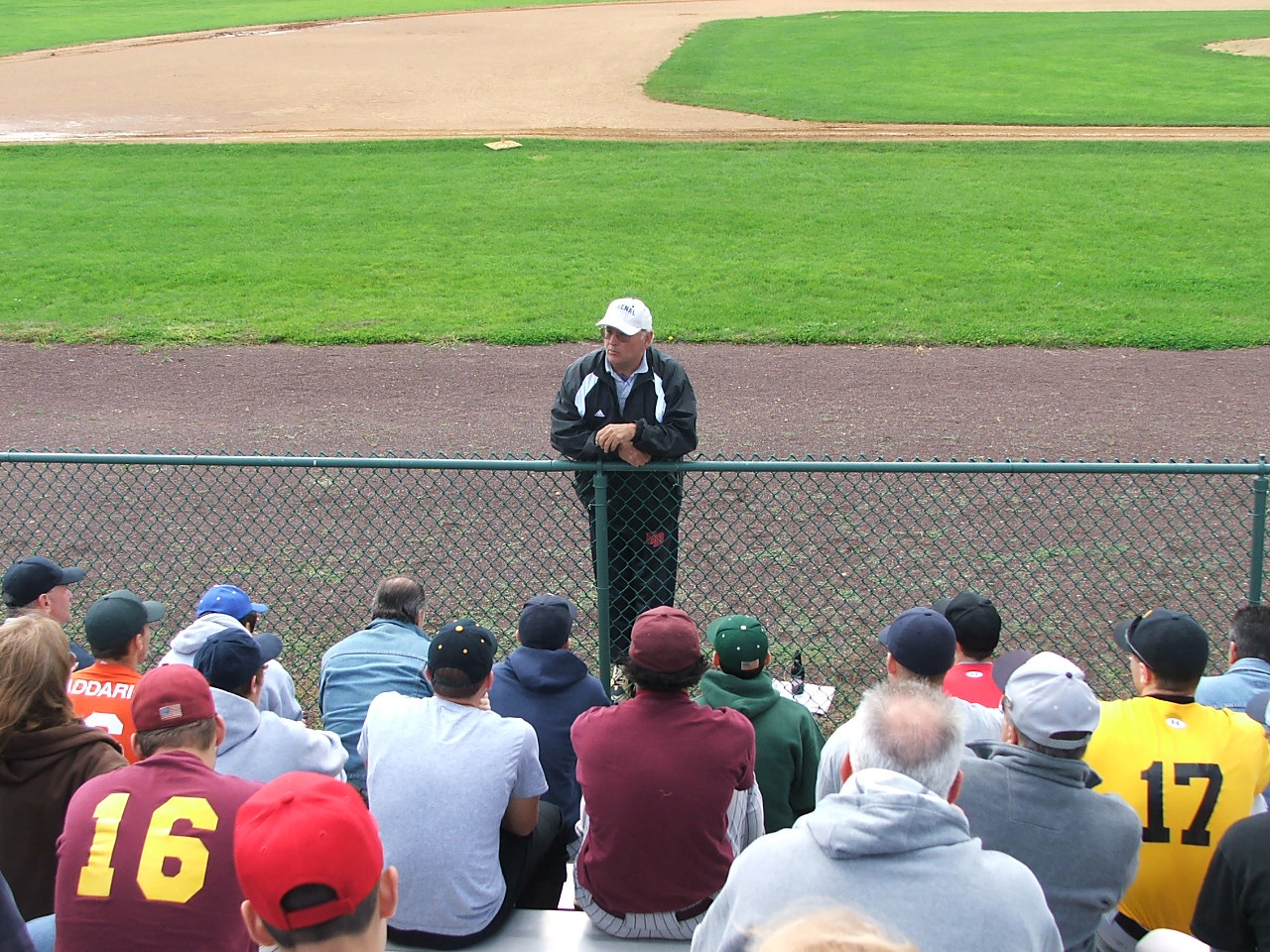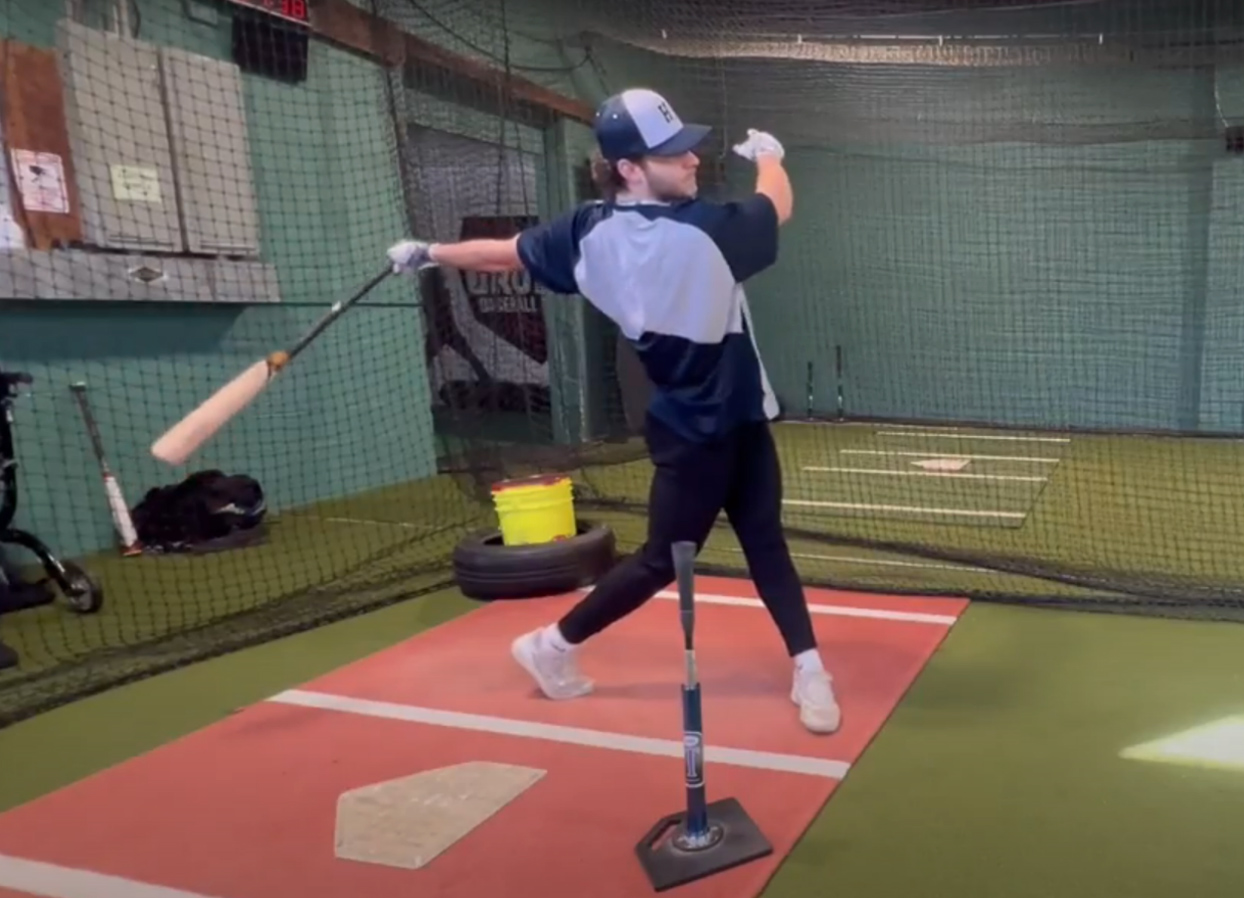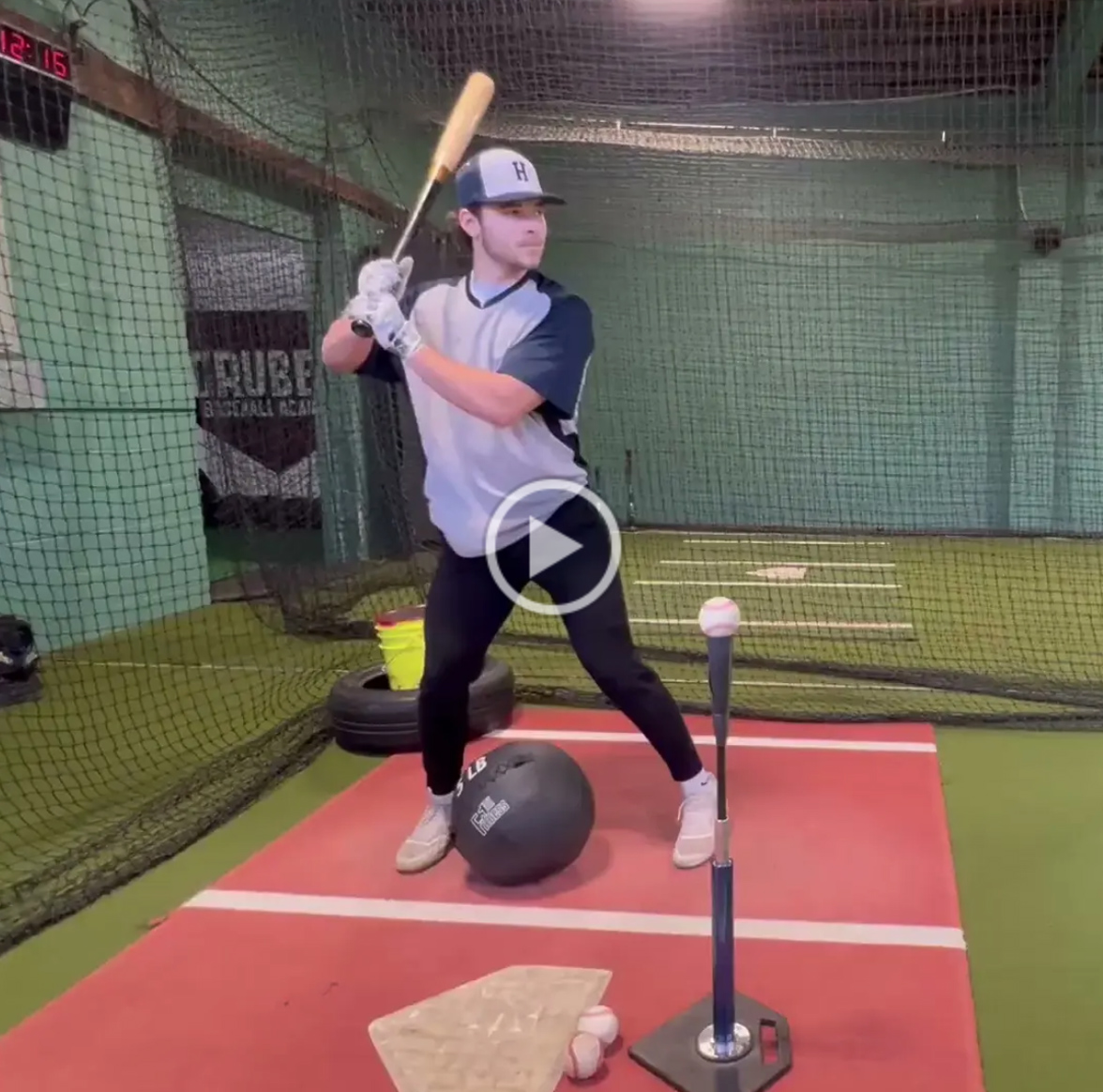Back knee med ball also known as Back Knee Down Drill this baseball drill is for rotational power to improve your swing. The Hit Doctor Lessons use this drill for players to emphasize proper lower body mechanics, focusing on the correct positioning and movement of the back knee during a swing. This drill helps players develop better hip rotation, balance, and power transfer from the lower body to the upper body during a swing.
Here’s a step-by-step breakdown of a baseball-specific exercise progression that involves driving the back knee into a med ball to simulate and enhance the power and mechanics of a baseball swing.
Insert video: Drill- Back Knee Med Ball
Back Knee Down Drill
Objective:
Improve lower body mechanics, balance, and power transfer during a baseball swing by focusing on the proper movement of the back knee.
Equipment Needed:
- Bat
- Tee
- Baseballs
Step 1: Warm-Up
- Dynamic Stretching:
- Perform dynamic stretches focusing on the hips, hamstrings, quads, and shoulders.
- Examples: Leg swings, walking lunges, arm circles.
Step 2: Set Up
- Positioning:
- Stand in your batting stance with a bat in hand and use a med ball for resistance.
- Using a tee, set it up at a height that aligns with your normal swing plane.
Step 3: Execution of the Drill
Basic Back Knee Down Drill
- Starting Position:
- Place the med ball on the ground, the med ball set up should be above the knee height.
- Hold the bat normally, or hold it at chest level.
- Lower yourself into a lunge position with your back knee hovering just above the med ball.
- Ensure your front knee is bent at a 90-degree angle, and your weight is evenly distributed.
- Engage your core muscles to maintain stability and balance.
- Keep your shoulders relaxed and your eyes forward.
- Execution:
- Focus on engaging your backside first. Feel the movement as your hips start to drive downward.
- Your back knee should move inward towards your front knee, creating a strong rotational movement of your hips.
- Your front foot should remain planted, and your weight should transfer from your back foot to your front foot.
- As you start your swing, focus on driving your back knee down towards the med ball in the ground.
- Swing through the ball and Hit the ball off the tee, focusing on driving it with power and balance.
- Key Points:
- Ensure that your back knee drops in the med ball at the ground and rotates inward, not just straight down.
- Your hips should rotate fully, leading to a powerful and balanced swing.
- Keep your head still and eyes on the ball.
Tips for Effective Execution
- Maintain Balance: Ensure that your body remains balanced and controlled throughout the drill.
- Engage Core: Use your core muscles to support your movements and generate power.
- Controlled Power: While the drill emphasizes power, ensure that your movements are controlled to prevent injury.
- Consistent Practice: Regular practice of this drill will help reinforce proper mechanics and improve overall performance.
By integrating the “Back Knee Down” drill into our training routine, the players can enhance the power, balance, and efficiency of their baseball swing, ultimately improving their performance on the field.
Happy Gilmore Drill
The “Happy Gilmore” drill is designed to improve bat speed, power, and lower body mechanics by simulating a more dynamic, moving start to the swing. Named after the character from the movie who used a running start in golf, this drill helps baseball players engage their entire body in the swing.
Insert vid: Drill- Happy Gilmores
Equipment Needed:
- Bat
- Tee
- Baseballs
Step 1: Set Up
- Positioning the Tee:
- Place the tee at an appropriate height for your swing.
- Place a baseball on the tee.
- Assuming the Starting Position:
- Stand a few feet behind the tee, facing the direction where you will step forward into your swing.
Step 2: Execution of the Drill
- Starting Position:
- Hold the bat in your hands, relaxed at your sides.
- Take a few steps back from the tee to give yourself space for a stepping-start.
- Initiating the Movement:
- Take a short, controlled step to start towards the tee.
- As you approach the tee, plant your back foot firmly on the ground.
- Immediately follow with your front foot, stepping into a strong, balanced batting stance.
- Executing the Swing:
- As your front foot plants, begin your swing.
- Rotate your hips and drive your back knee inward towards your front knee.
- Swing the bat through the ball on the tee, focusing on maintaining balance and control despite the dynamic start.
- Follow-Through:
- Complete your swing with a smooth and controlled follow-through.
- Ensure your body remains balanced and your head stays still, eyes on the ball.
Tips for Effective Execution
- Controlled Start: Ensure your stepping-start is controlled and balanced. Avoid rushing or becoming unbalanced.
- Engage Whole Body: Use the dynamic movement to engage your entire body in the swing, generating more power and bat speed.
- Maintain Mechanics: Focus on maintaining proper swing mechanics even with the added movement.
- Smooth Follow-Through: Complete your swing with a smooth and controlled follow-through, ensuring you remain balanced.
We’re teaching the players how to drive all the power that can be generated from the backside to the front side, which is why the happy Gilmore drill is so beneficial despite its many moving elements. You are not getting a running start, but you will step with enough force to propel your hips, shoulders, and body toward the baseball to generate a whipping motion that will allow you to hit it. This is an enjoyable exercise that enables you to repeatedly produce force and separation in your swing by using your back leg.



